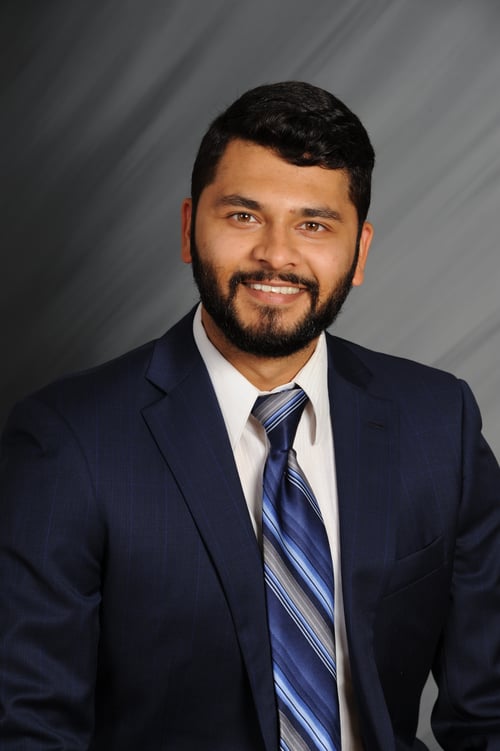
Winter is the most likely time patients come down with upper respiratory infections (URIs). A combination of cold, dry air allowing the virus to travel easier as well as people generally staying indoors is the perfect recipe to make winter the official URI season. The most common cause of URIs is the aptly named “common cold”, caused by a virus called rhinovirus. The common cold, sometimes called a viral URI by your physician, most commonly affects patients by causing symptoms such as fever, body aches, headache, nasal congestion, runny nose, sneezing, sore throat, and cough, all typically lasting a few days to a week. Oftentimes, viruses can cause a “viral syndrome” which allows other symptoms to occur such as nausea, vomiting, or diarrhea. Additionally, many symptoms of the common cold tend to last for an extended period, even after the patient feels much better. Most commonly, this presents as a lingering, dry cough in the setting of a patient who had a recent URI. We call this a “post-viral cough”, and we can expect symptoms to last for as long as four weeks. The treatment for the common cold is largely based around treating the symptoms. We emphasize adequate hydration first and foremost, especially in the setting of viral syndrome causing gastrointestinal symptoms. Second, we recommend over-the-counter medications for aches and pains such as Tylenol, Motrin, and cough medicines/lozenges. For kids older than one year of age, honey is a great cough remedy. If patients are concerned about their symptoms such as lingering ear pain, sore throat, or generally symptoms that last longer than a week or so, we recommend getting seen by a physician to see if any additional treatment is required. Additionally, if a patient has multiple medical problems or another aspect of their medical history which could complicate a viral URI, then early physician evaluation would also be a good idea.
Another virus is also quite common during this same time of the year, called the influenza virus, or flu for short. Symptoms are very similar to viral URI and can often be difficult to distinguish. In general, symptoms involve a more abrupt onset of fever and cough, chills, congestion, runny nose, sore throat, headache, myalgias, fatigue. Treatment is largely based on the same principles as treating a viral URI: hydration, symptomatic treatment, monitor for worsening symptoms. The main difference with influenza is that doctors can better help patients prevent and sometimes treat symptoms.
We can prevent influenza with an annual vaccine which becomes available during October, just in time for the cold weather. Ask your physician if getting an annual flu vaccine is a good idea for you. We can also treat influenza with medication, to an extent. There are medications that your physician can prescribe to reduce the duration of symptoms and possibly reduce the severity of the condition. Unfortunately, these medications only work best if taken early on during the course of the illness (within 48 hours of symptom onset). Ask your physician if you are a candidate for one of these medications.
One final note about viral URIs and influenza: both of these conditions are caused by viruses. Antibiotics are medications that are specifically designed to treat bacterial infections, and in general antibiotics have not been shown to be effective in treating these two conditions. In fact, taking antibiotics for these conditions could potentially be harmful to patients, due to side effects, allergic reactions, and other adverse events. However, antibiotics may be helpful in certain situations where a physician suspects a bacterial infection such as pneumonia, ear infection (otitis media) with symptoms lasting longer than 3 days, or strep throat (strep pharyngitis).
 Dr. Downham is a resident physician who sees patients of all ages and provides obstetrical services at Lone Star Family Health Center, a non-profit 501©3 Federally Qualified Health Center operating facilities in Conroe, Spring, Willis, Grangerland, and Huntsville, and serving as home to a fully integrated Family Medicine Residency Program to increase the number of Family Medicine physicians for Texas and our community.
Dr. Downham is a resident physician who sees patients of all ages and provides obstetrical services at Lone Star Family Health Center, a non-profit 501©3 Federally Qualified Health Center operating facilities in Conroe, Spring, Willis, Grangerland, and Huntsville, and serving as home to a fully integrated Family Medicine Residency Program to increase the number of Family Medicine physicians for Texas and our community.



